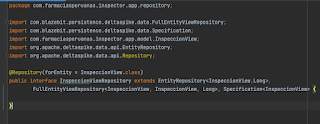Siempre he estado posteando sobre tecnología, cursos, pero, ya casi pronto a cumplir mis 48 años quiero comentarles algo que he visto en mi vida y que me ha ayudado muchísimo. No se que religión profeses, así que no juzques mi post por tu posición religiosa, sino miralo como una conclusión en base a la experiencia y si te sirve super, sino, simplemente ríete y sigue navegando en la internet.
Nunca he experimentando más satisfacción que apoyar y ver a mis padres. No ha sido fácil, cuando uno se casa o contrae matrimonio, su foco es tu familia y a veces te pierdes en tus temas, y puedes llegar a ver a tus padres muy poco.
Hermano, cuidate de eso, no digo, ni apoyo que vivas con tus padres mientras ellos se pueden valer por si mismos. Pero, una cena, una salida con ellos de vez en cuando, te ayudará mucho, recordarás los viejos tiempos y reíras con quienes lo unico que quieren para ti es que seas feliz.
Hoy tengo a mi madre viva, mi padre nos dejo en 1995 y les confieso mis hermanos, que nunca he sido mas feliz que conversando con mi madre. No vive conmigo, pero, lo hará cuando necesite quien la asista. Siempre recibo una bendición de su parte y siempre ora por mi y la familia con su rosario. En verdad soy afortunado porque mi madre siempre me ha aconsejado en mis proyectos, en mis ideas, y siempre ha estado conmigo en los exitos y fracasos.
Así que mis hermanos, ese mandamiento (y aqui si se me sale lo creyente), no es solo para los padres que fueron buenos contigo, que estuvieron siempre contigo, no hay distinción, no los juzgues, y mas bien, a pesar de sus errores, amalos, perdonalos y vive con ellos sus ultimos años, veras que serás feliz como una lombriz y tus proyectos siempre te iran bien. No dejes que se vayan sin haberte reconciliado con ellos, nunca, pero, nunca te arrepentiras. Habrás ganado muchísimo perdonando y siendo un buen hijo.
Tu amigo
Joe






















































